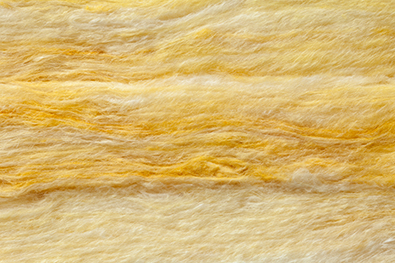
Insulation Solutions to Enhance Thermal Comfort in Buildings
Thermal comfort is a key factor in creating a pleasant and healthy indoor environment. It directly impacts the comfort, well-being, and productivity of the building’s occupants. Achieving thermal comfort requires proper insulation to regulate indoor temperatures and minimize energy consumption. In this blog, we’ll explore various insulation solutions that can significantly improve thermal comfort in buildings, making them more energy-efficient and comfortable throughout the year.
1. What is Thermal Comfort?
Thermal comfort refers to the condition in which the occupants of a building feel neither too hot nor too cold. Achieving this balance depends on factors such as temperature, humidity, air movement, and the building’s insulation. Proper insulation plays a major role in creating and maintaining a consistent indoor temperature by reducing heat loss in winter and preventing heat gain in summer.
2. Thermal Insulation Solutions for Buildings
Here are some of the most effective insulation solutions to enhance thermal comfort:
- Rockwool (Mineral Wool) Insulation: Rockwool is one of the most effective insulation materials for maintaining thermal comfort. Its high thermal resistance (R-value) helps prevent heat from escaping during winter and keeps buildings cool in summer. Additionally, rockwool provides excellent soundproofing and fire resistance, making it a versatile and reliable solution for homes and commercial buildings alike.
- Polyurethane Foam: Polyurethane foam is known for its high insulating properties and low thermal conductivity. Spray foam insulation can be applied to walls, ceilings, and floors to create an airtight seal that improves both insulation and energy efficiency. It helps maintain a consistent indoor temperature while reducing the need for excessive heating or cooling.
- Fiberglass Insulation: Fiberglass insulation is a popular and cost-effective solution for improving thermal comfort. It is available in batts or loose-fill form and works by trapping air pockets within its fibers, effectively reducing heat transfer. Fiberglass insulation can be used in walls, attics, and floors to help regulate indoor temperatures.
- Reflective Insulation: Reflective insulation materials, such as foil-faced bubble wrap or radiant barriers, reflect heat away from buildings. These materials are particularly effective in warm climates as they help prevent heat from entering the building, thereby enhancing cooling efficiency. They can be installed in attics, walls, and roofs to improve thermal comfort.
- Cellulose Insulation: Made from recycled paper products, cellulose insulation is an eco-friendly option that offers excellent thermal performance. Blown into cavities, it effectively seals gaps and reduces heat transfer. Cellulose is particularly beneficial in maintaining thermal comfort in older homes, where gaps and cracks are common.
3. The Role of Insulation in Seasonal Thermal Comfort
Effective insulation helps ensure consistent indoor temperatures year-round, providing comfort regardless of external weather conditions:
- Winter Comfort: In the winter months, proper insulation helps retain heat inside the building, reducing the need for excessive heating. Insulating walls, floors, and ceilings helps create a barrier that prevents heat loss. Rockwool, fiberglass, and spray foam are particularly effective in cold climates.
- Summer Comfort: During the summer, insulation materials help keep the heat outside and maintain a cool indoor environment. Reflective insulation and foam board insulation are excellent choices for hot climates. They reflect solar heat and minimize the need for air conditioning, which can lead to energy savings.
4. Energy Efficiency and Reduced Utility Bills
Beyond providing thermal comfort, insulation plays a significant role in improving energy efficiency and lowering utility bills. By preventing heat loss in winter and heat gain in summer, insulation reduces the workload of heating and cooling systems. This translates to less energy consumption and lower heating and cooling costs, making insulation a smart investment for homeowners and businesses alike.
5. Advanced Insulation Technologies for Enhanced Comfort
Recent advancements in insulation technology have introduced even more efficient solutions for achieving optimal thermal comfort:
- Aerogel Insulation: Known as the “world’s lightest solid,” aerogel insulation offers extremely low thermal conductivity, providing exceptional thermal performance in a very thin layer. It’s ideal for retrofitting buildings with limited space for insulation installation.
- Phase Change Materials (PCMs): PCMs absorb and release thermal energy as they change between solid and liquid states. These materials help maintain a stable indoor temperature by absorbing excess heat during the day and releasing it at night. PCMs are being incorporated into wall panels, ceiling tiles, and flooring materials to enhance thermal comfort in modern buildings.
- Vacuum Insulation Panels (VIPs): VIPs are high-performance insulation materials that provide superior thermal resistance in a thin profile. These panels are ideal for buildings with limited space where traditional insulation might be too bulky. VIPs are often used in high-end construction projects and in applications requiring extreme insulation, such as cold storage units.
6. Sustainable Insulation Solutions for a Healthier Environment
Eco-friendly insulation materials, such as recycled cellulose, hemp, and cotton insulation, offer not only excellent thermal performance but also contribute to a healthier living environment. These materials are biodegradable, non-toxic, and sustainable, making them ideal for those who are conscious about the environmental impact of their building materials. By choosing these materials, you can improve thermal comfort while reducing your carbon footprint.
7. Installing Insulation for Maximum Effectiveness
Proper installation is key to maximizing the thermal comfort benefits of insulation. Gaps, compression, and improper application of insulation can lead to thermal bridging and inefficiency. It is essential to hire professional installers who can ensure the insulation is properly applied to walls, attics, floors, and ceilings for maximum energy efficiency and comfort.
Conclusion
To achieve optimal thermal comfort in buildings, it’s essential to choose the right insulation materials and ensure proper installation. Whether you’re looking to keep your home warm in the winter, cool in the summer, or reduce your energy consumption, insulation is a valuable solution that benefits both comfort and sustainability.
Interested in enhancing your building’s thermal comfort? Contact us today to explore the best insulation solutions tailored to your needs!